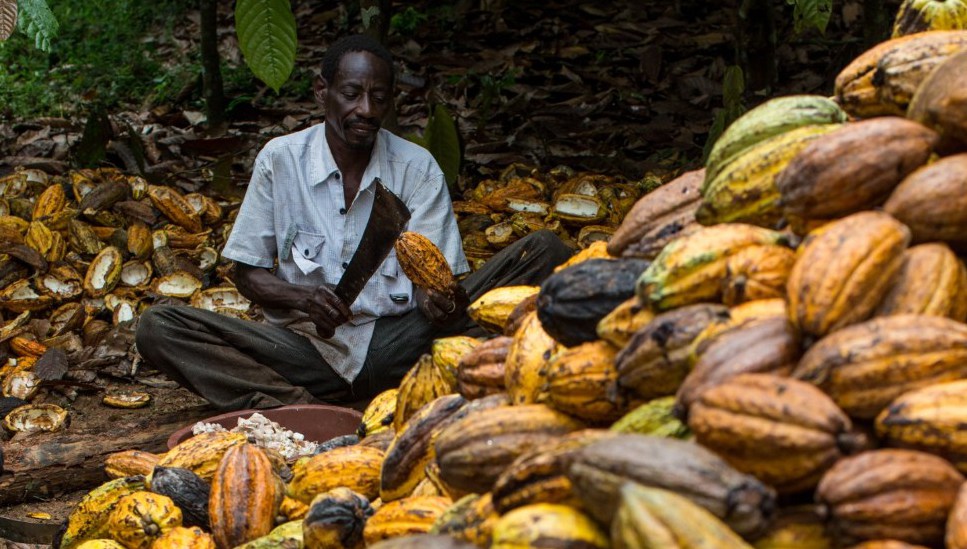
At his plantation in Muyuka, southwest Cameroon, Chief Orok John diligently inspects his young cocoa plants, grappling with pod diseases that have plagued his crops for weeks. Opting to sell his produce in Nigeria due to heightened competition with local buyers, Chief John underscores the need for government support to establish local cocoa factories, mirroring the success of neighboring countries like Nigeria, Ghana, and Ivory Coast.
The international cocoa market has recently witnessed scarcity, propelling prices per tonne beyond $10,000 and severely impacting Ghana, Ivory Coast, and Cameroon, the major cocoa-producing nations. Contributing factors include diminished quality, climate change-induced weather fluctuations, and a persistent demand-supply gap exacerbated by years of low cocoa prices that led to neglected plantations and reduced yields.
In Cameroon, cocoa prices have surged seven-fold in a month, from 900 to 7,000 francs per kilo, posing significant challenges for local processors like Hippolyte Nozawo Tchoffo, whose chocolate production heavily relies on cocoa content. The substantial cost increase threatens to render chocolate bars unaffordable for consumers, jeopardizing businesses.
To address the crisis, the government pledges financial assistance to farmers to ensure the production of high-quality cocoa for both local and international markets. However, some chocolate makers halt production until costs stabilize and advocate for the reimbursement of export taxes to alleviate financial strains.
In this tumultuous landscape, the urgency lies in fostering sustainable cocoa production practices, enhancing infrastructure for local processing, and implementing policies that support both farmers and manufacturers. Only through concerted efforts can the cocoa industry weather the challenges and thrive in the face of evolving market dynamics and environmental pressures.
